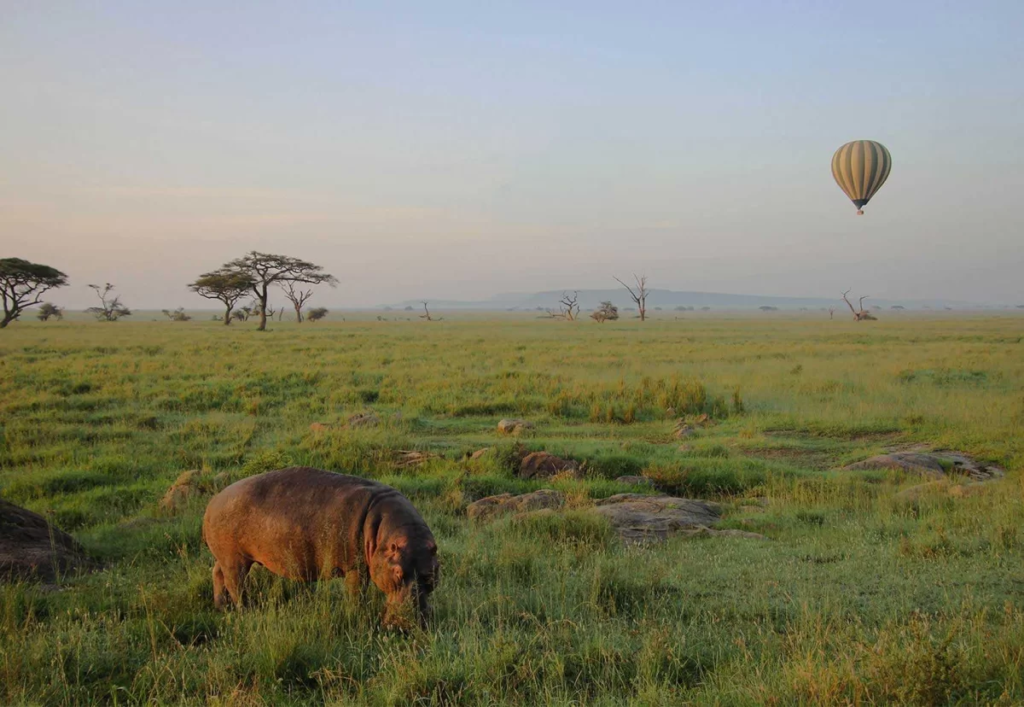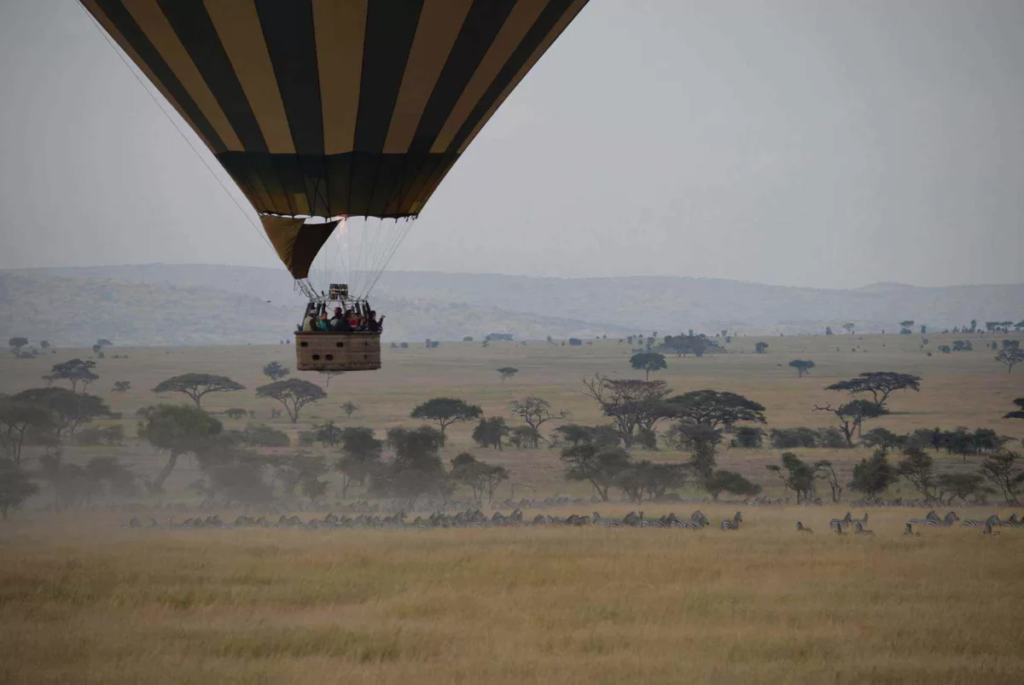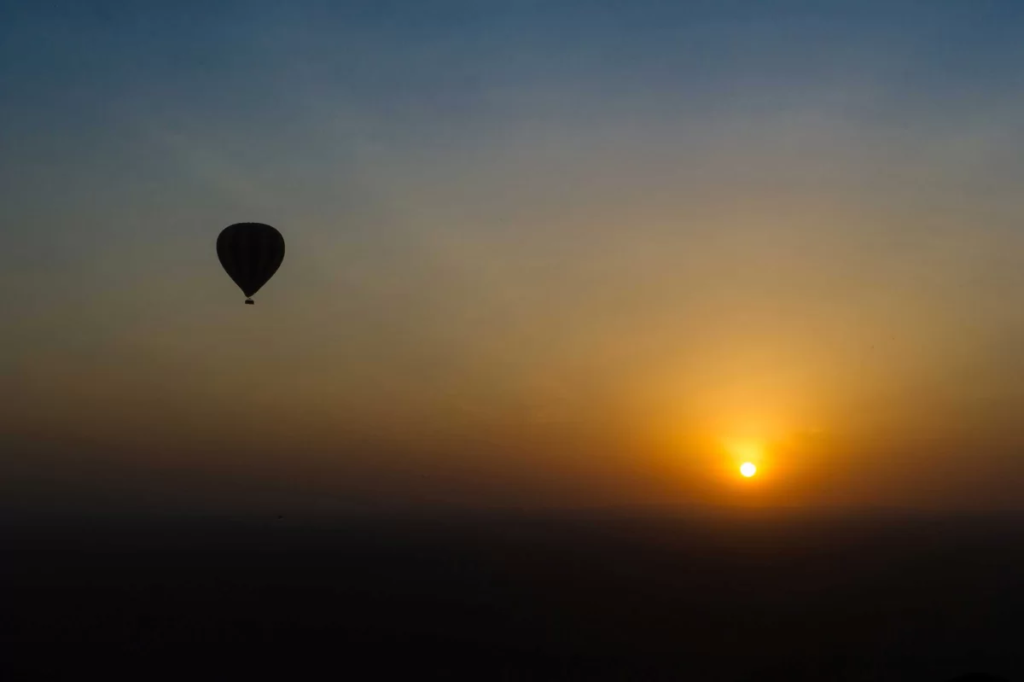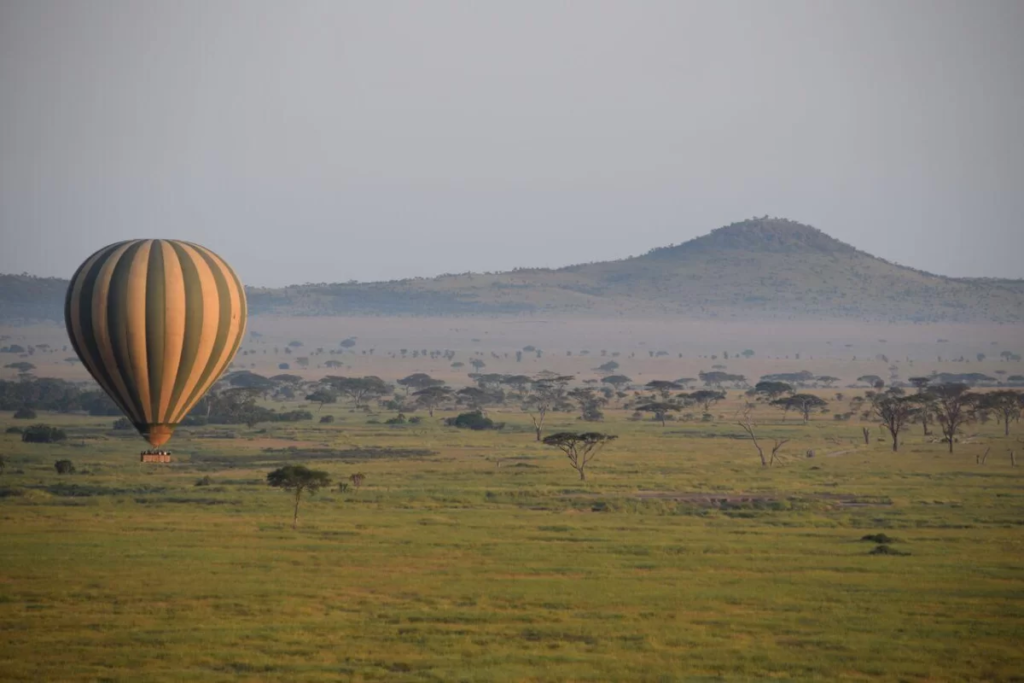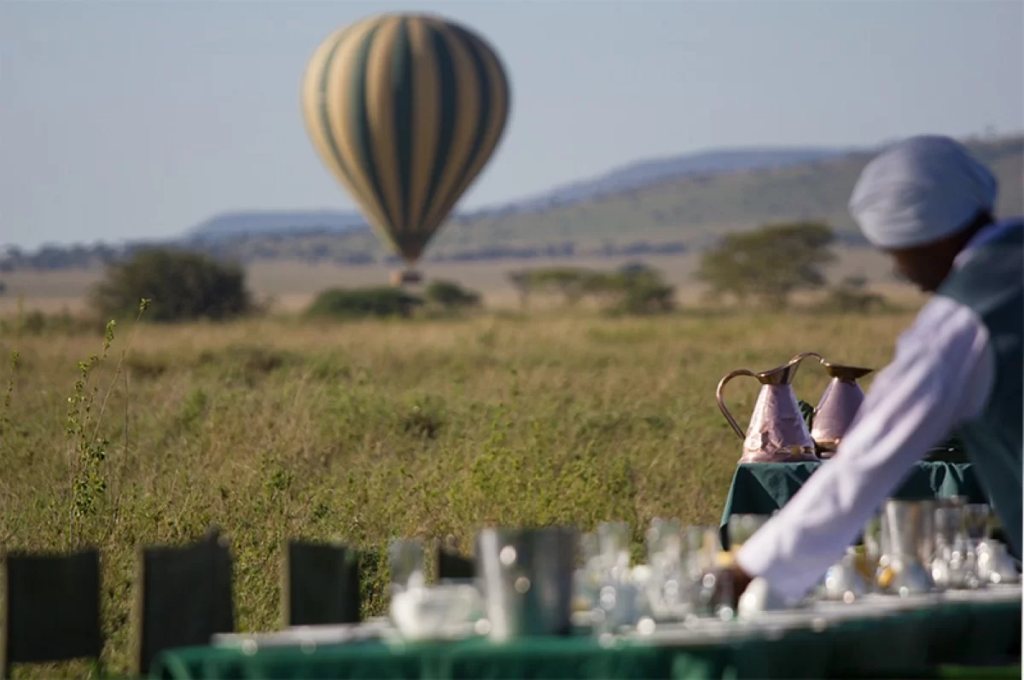Ballon Safari
Ballon Safari
Witness Wildlife Like Never Before!
A Balloon Safari in Tanzania offers a breathtaking adventure above the iconic landscapes of the Serengeti, Tarangire, or Ngorongoro Conservation Area. As the sun rises, you’ll drift silently over the golden savannah, witnessing herds of elephants, giraffes, and zebras from an unmatched perspective. This serene journey provides panoramic views of Tanzania’s wildlife and stunning scenery, creating unforgettable memories of the African wilderness. Perfect for nature lovers and adventurers, a balloon safari is a unique way to experience the magic of Tanzania.
A balloon safari typically begins in the early morning, just before dawn, when the cool, calm air ensures a smooth ride. After a safety briefing, guests are treated to the magical sight of the balloon being inflated, its vibrant colors illuminated by the first rays of sunlight. Once airborne, the silence is broken only by the occasional whoosh of the burner, allowing for peaceful observation of wildlife in their natural habitat. Spotting lions on a hunt, hippos in the rivers, or a vast herd of wildebeest during their migration is common. After landing, the adventure concludes with a luxurious bush breakfast, often accompanied by champagne, making the experience both thrilling and indulgent.
Plan Balloon safari trip
Plan your Serengeti National Park trip for breathtaking wildlife safaris, the iconic Great Migration, and unforgettable sunsets over the vast savannah.
The Serengeti. 14,763km2 of African savannah stretching as far as the eye can see. We fly here because the climate is almost perfect; the temperature seldom falls below 12° or rises above 26°. The wind blows gently and reliably for 349 days of the year. However the skies above the Serengeti put on a show as diverse as that which plays out on the ground. A dramatic thunderstorm to the west, shafts of light penetrate a shower to the east while the north and south bathe in warm sunshine. The clarity of the air affords us views of the Ngorongoro Highlands and sometimes Lake Victoria. From our lofty vantage point, we can appreciate the Serengeti in all its majestic scale, and we have a perspective untethered by the narrow confines of vehicles and roads. Read more
Oh, Tarangire! The wildlife viewing here is wonderful, plenty of large mammals and incredible bird life.
Serenely floating over this landscape is nourishment for the soul. We love to fly here because it has such a different feel to Serengeti, it's less of a journey and more of an immersion in the scenery, aural vista and the peace of scanning for the wildlife below.
Of all the places in Tanzania we could choose to fly, we singled out Ruaha because it is a land of wilderness and contrast.
The peace is palpable here and yet it is bursting with life. In Ruaha you hear the hornbill tapping at his reflection on the car window and the hippo’s morning chorus snorting in the river as we float low overhead. Our unique perspective above the landscape allows us to search for the elusive and shy just over that next bush or suddenly come upon a herd of 100 buffalo. Gentle winds steer the balloon between the baobabs and acacias, dipping down to just above the wide Ruaha River and then they are bearing us up to five hundred feet where the dawn chorus rises into the painted sky. Ruaha is a meeting point for the wildlife of southern and eastern Africa and it is here that you might just see something really special.
Gallery
A Stunning Gallery of Balloon Safari Adventures!
FAQS
How does a hot air balloon work?
A hot air balloon works on the principle of buoyancy. It consists of a large balloon, known as an envelope, filled with hot air. The envelope is typically made of lightweight and heat-resistant materials such as nylon or polyester. The balloon is attached to a basket or gondola, in which passengers and the pilot stand. The process starts by heating the air inside the envelope using burners fueled by liquid petroleum gas. The burners generate a flame that heats the air, causing it to expand and become less dense than the surrounding air. As a result, the balloon becomes buoyant and begins to rise. The balloon moves with the wind, as there is no way to steer it directly. However, our pilots can control the ascent and descent of the balloon by adjusting the heat inside the envelope. By adding more heat, the air inside the envelope becomes hotter and provides more lift, causing the balloon to rise. Conversely, by reducing the heat, the air inside the envelope cools down, becoming denser and causing the balloon to descend. To land the balloon, the pilot gradually decreases the heat and allows the air inside the envelope to cool, slowing down the ascent. The pilot looks for a suitable landing spot and, with the help of ground crew, guides the balloon to the ground by releasing some of the hot air from the envelope. The basic principles behind a hot air balloon are simple yet effective. By controlling the temperature of the air inside the envelope, the pilot can control the altitude of the balloon and navigate the skies. It’s a unique and serene way to experience flight and enjoy breathtaking views from above.
When is the best time of year for ballooning in Serengeti?
We are fortunate that the weather in the Serengeti is suitable for ballooning almost every day of the year.
We fly in the following areas every morning: Central Serengeti : Year Round. Ndutu Area, Ngorongoro Conservation Area/Serengeti: 20 Dec – 31 March. Western Serengeti: 15 May – October. Northern Serengeti: 15 June – 15 January. Safari wildlife viewing varies depending on the time of year and location, and the wildebeest migration moves through the ecosystem year-round so although there are no guarantees, if you’re in the right place at the right time, you have a good chance of seeing plenty of wildlife.
In Serengeti, it mostly rains in the afternoons, evenings or night time, early morning is the driest part of the day and that’s when we fly!
Do you operate year round?
Yes, we operate daily throughout the year in central Serengeti. We operate seasonally in the following areas in Serengeti: Central Serengeti : Year Round Ndutu Area, Ngorongoro Conservation/Serengeti: 20 Dec – 31 March Western Serengeti: June – October Northern Serengeti: 01 July – 15 November A typical day on safari can now include an early morning balloon flight and a different perspective the Serengeti!
Need Help?





